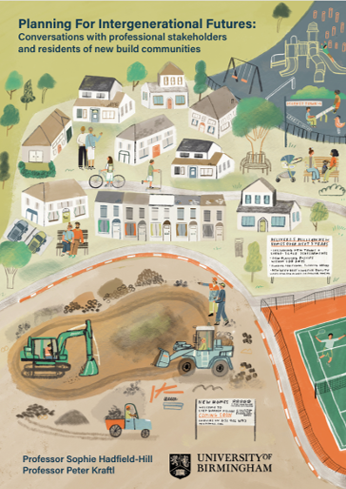



In 2023/24 we asked how future urban places can meet the needs of different generations of residents who live in them. It is based on the observation that many new urban places neither meet the needs of children and young people, nor do they enable older people to 'age in place' (if they wish to). Our work, alongside that of many academics, has identified that there are many tensions between residents of different ages in urban places - and that even more recently-planned communities have not managed to address this issue.
Our report published in 2024, available here, is part of a longer-term initiative to shape national and international agendas with the primary aim of creating better places for children, young people and families. The report outlines our main thematic findings and sets out key recommendations, which were co-designed with a group of 30 professionals from relevant sectors at a conference in Birmingham in May 2024.
We hope our research and recommendations will be of use to you and your organisation. If you need any further evidence about any of the themes or you would like to work with us on an aspect of designing / building new communities, please do get in touch.
Report reference:
Hadfield-Hill, S. and Kraftl, P. (2024) Planning For Intergenerational Futures: Conversations with professional stakeholders and residents of new build communities. Birmingham: University of Birmingham.
We are happy to provide more detailed information, or support in implementing any of our recommendations (across the Garden Village and Town portfolio or any newly build development). Please do contact us:
Professor Peter Kraftl
University of Birmingham
P.Kraftl@bham.ac.uk
Professor Sophie Hadfield-Hill
University of Birmingham
s.a.hadfield-hill@bham.ac.uk
© Copyright Planning for Children and Young People